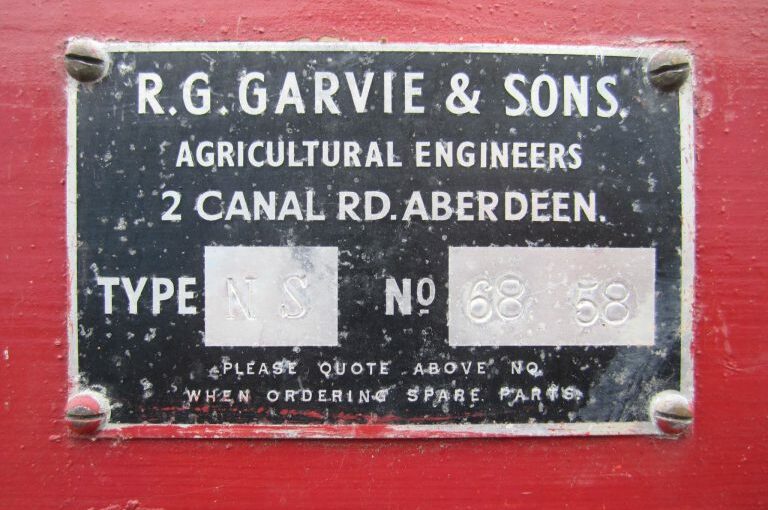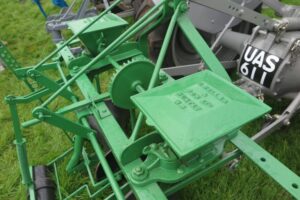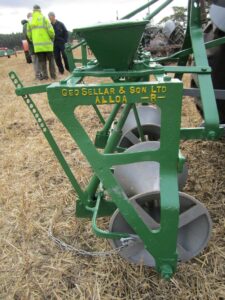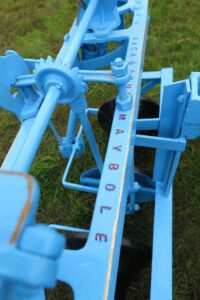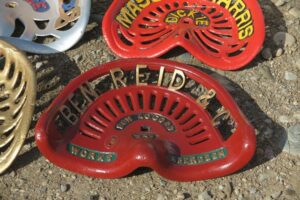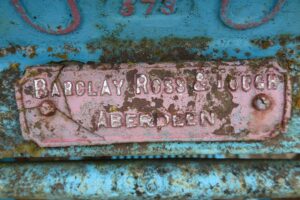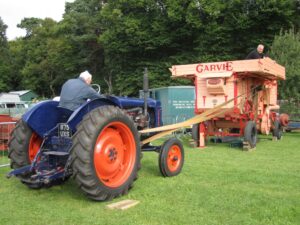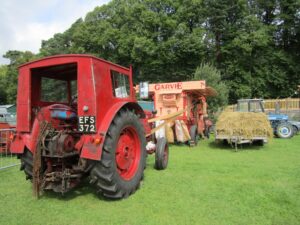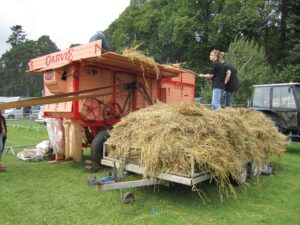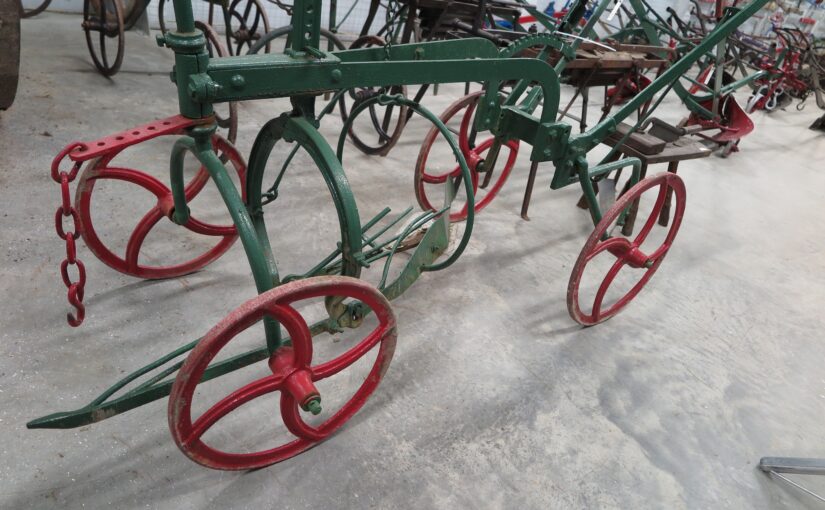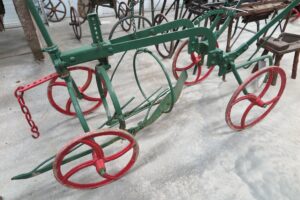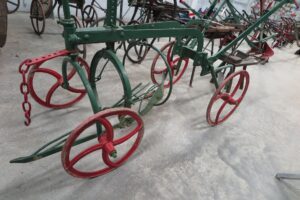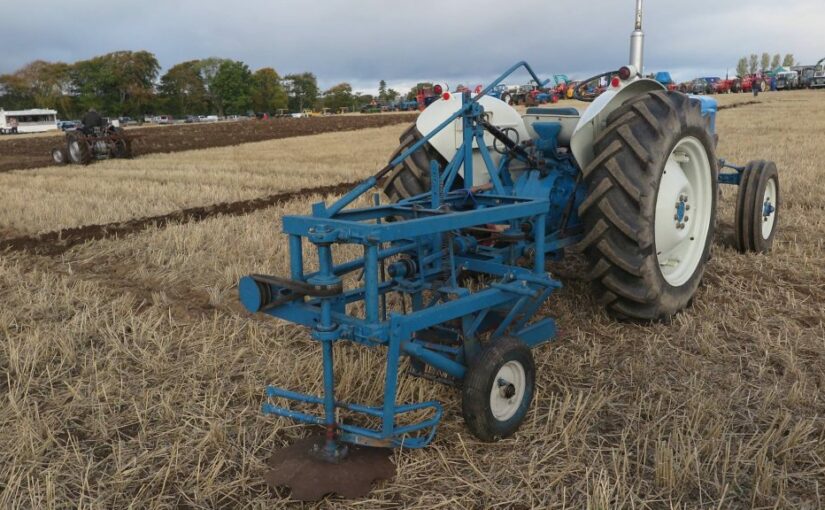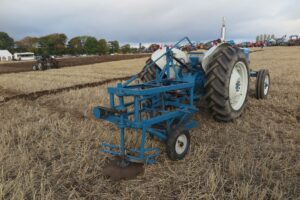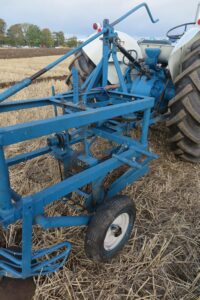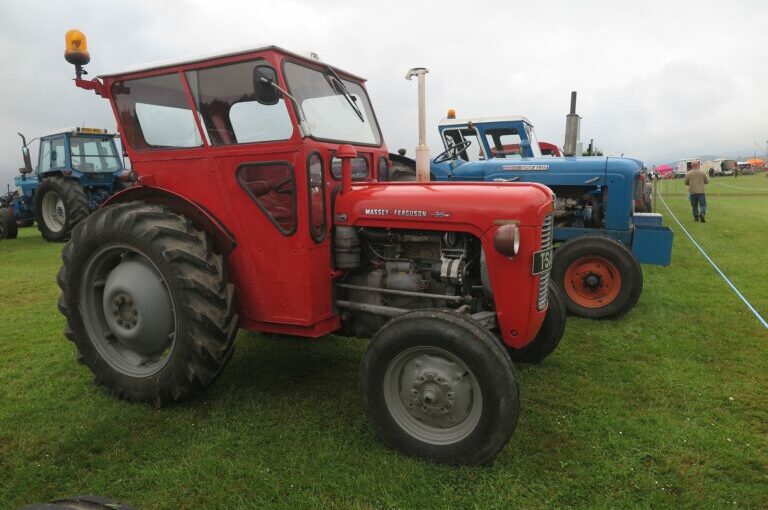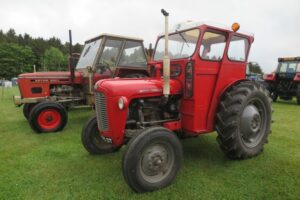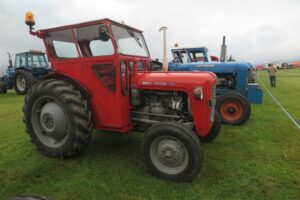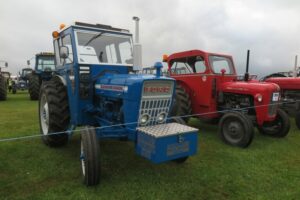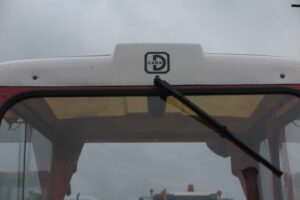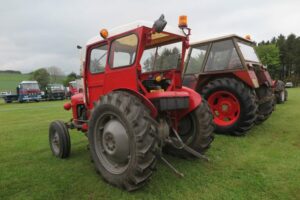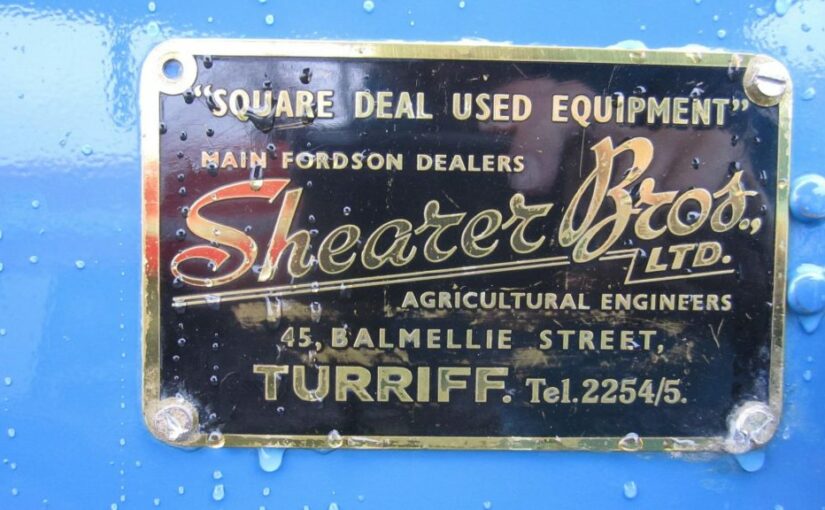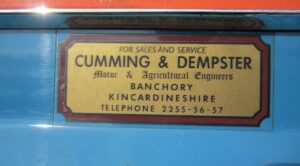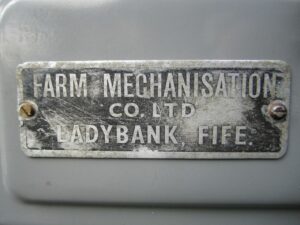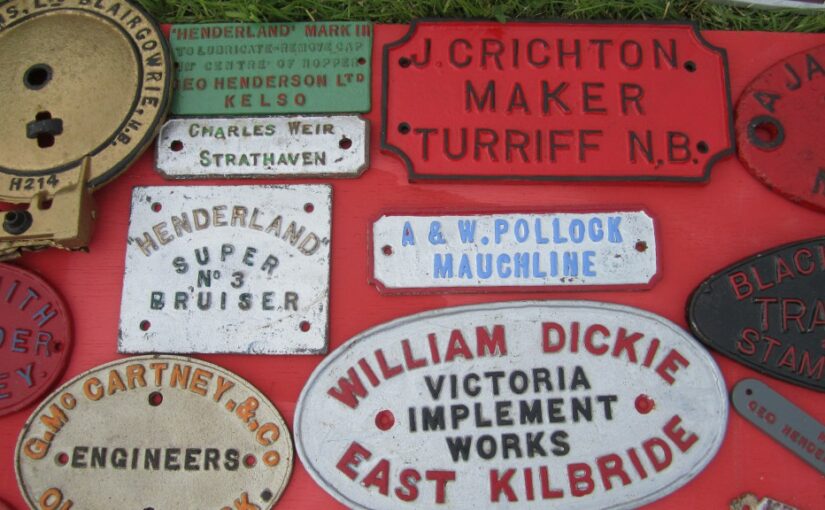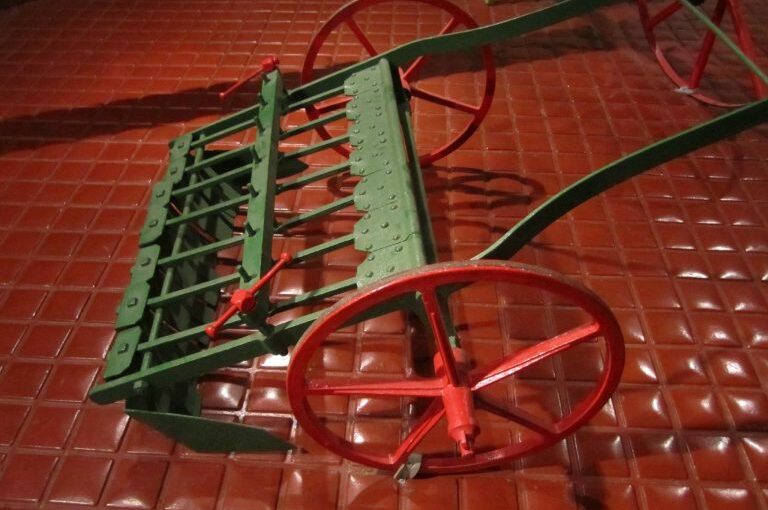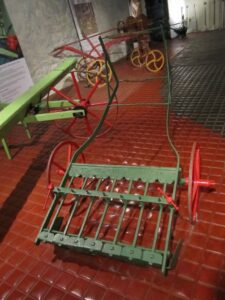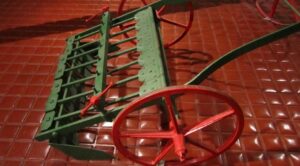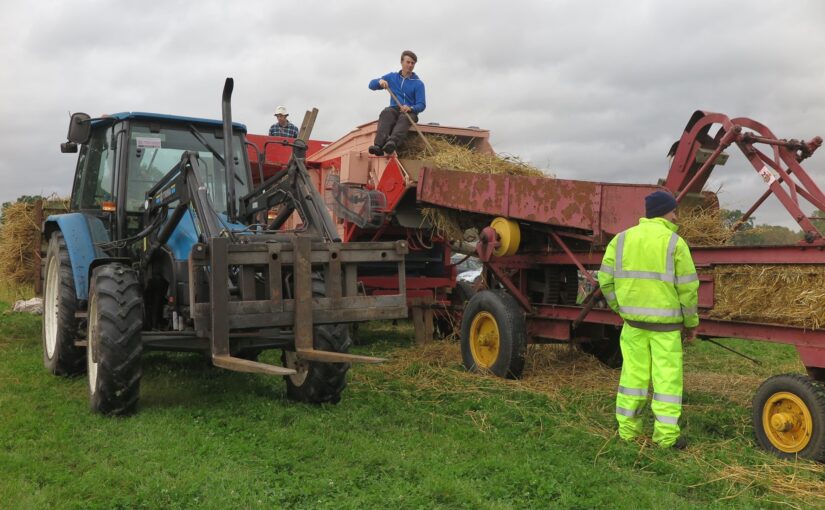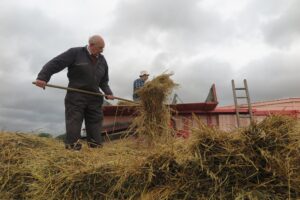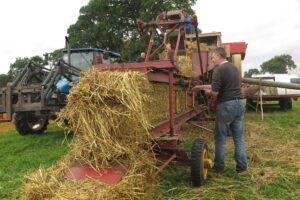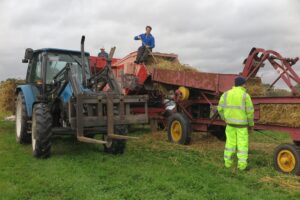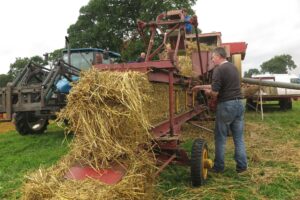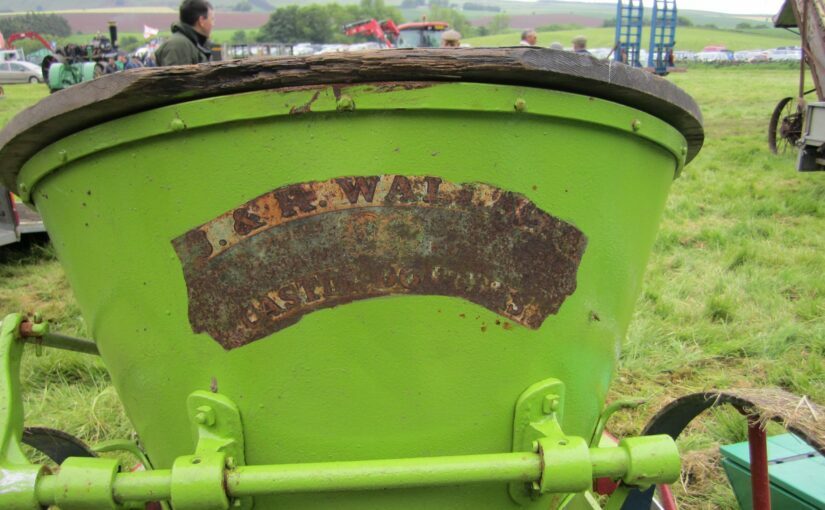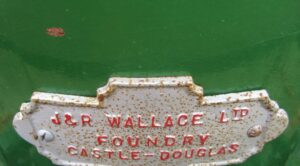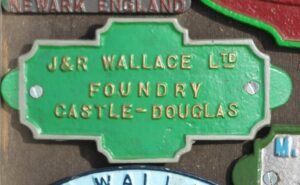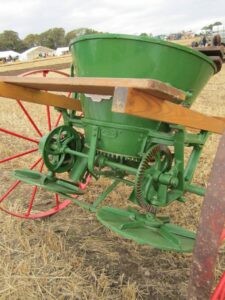During the Second World War there continued to be farm displenishing sales, and the sale of agricultural implements and machines. A number of these sales were held in Perthshire and central Scotland.
These provide insights into what implements and machines were used on farms, the types of activities undertaken, as well as the extent of mechanisation through the use of motive power. While some farms continued to work with horses, others had moved onto tractors, or were using a combination of both as their main source of power.
The adverts also highlight some of the names of the makers of the implements and machines, especially where they were leading ones, renowned for particular manufactures. In the following adverts they include a Newlands of Linlithgow ridger at Clathymore, a Dickie of East Kilbride hay sweep and a Newlands tractor cultivator and ridger at Muir o’ Lea, Bisset binders at that farm and at Meadows of Achalder, a Wallace of Glasgow turnip cutter at Stralochy. They may have attracted additional attendees and bidders to the sales; they also highlighted something about the status of the farm in respect of the brands used as well as what was available locally from dealers and agents.
The condition of some of the implements and machines are also noted, especially where they were in a good condition, or they were new. Vehicles and carts with rubber tyres are particularly singled out, being an improvement.
While the displenishing sale adverts provide key information as to the major implements and machines being disposed, they say very little the usual barn, stable and dairy utensils. They are described as the “usual” ones.
What observations do you have of the implements at the following displenishing sales?
Clathymore, Tibbermore, Perth (The Scotsman, 8 April 1942)
Implements-Fordson tractor (1940) with rubber tyres, set iron wheels with spade lugs for same, tractor plough (Lister Cockshut no. 10), tractor cultivator and ridger (Newlands), tractor trailer (new, and a large and varied selection of all necessary farm implements, in excellent condition, including harness, barn and stable utensils, and 2 hen houses.
Muir o’ Lea, Millearne, Auchterarder, belonging to Mr Scott (Dundee courier, 22 October 1942)
Implements-Massey Harris Challenge Tractor, R tyred, with pulley, self-lift and power take off complete (in fine order), Fordson tractor, 1942, R tyred (red spot), high top gear (new), tractor trailer with r tyres and harvest frame (new), tractor plough, Massey Harris 7ft power driven binder (new), Bisset binder, Newlands tractor cultivator and ridger (new), Dickie hay sweep, lorry for horse or tractor, 5 coup carts (2 new r.t), also a fine display of other farm implements, harness &c. Note: the implements are a very superior lot worthy of attention.
Western Downiesdrum, Blairingone, Dollar (Mr J. Skinner) (Stirling observer, 17 December 1942)
Implements-cart, binder, reaper and mower, rick-lifter, roller, hay tedder, horse rake, turnip sowing barrow, hay waggon, 2 swing ploughs, 2 drill ploughs, drill grubber, 2 sets diamond harrows, drill harrow, 2 sheep haiks, 2 sack weighing machines, turnip pulper, turnip slicer, cake breaker, hay chopper, steel barrels, sleepers, fencing posts, set harness (for one pair), odd harness, and all the usual barn, byre and stable utensils etc, oil engine and bruiser.
Meadows of Achalader, Blairgowrie (Mrs Rattray) (Dundee courier, 17 November 1942)
Implements-Wallace binder, 2 mowers (Wallace and Bisset), potato digger, metal roller (Sellar), 4 coup and corn carts, horse rake, hay collector, turnip sowing machine, turnip slicer, 5 Dux Oliver and Sellar ploughs, harrows, three-horse grubber, ladders, barrows, 24 sheets corrugated iron, and all the usual barn and stable utensils and dairy utensils, quantity furniture, 4 hives bees.
Stralochy, Murthly (Mr J, Rattray) (Dundee courier, 17 November 1942)
Implements-Fordson tractor (recently reconditioned), Oliver tractor plough, Oliver grubber, Wallace turnip cutter, 2 110a plough, 10a plough, 2 drill ploughs, potato digger, 3 drill harrows, circle and chain harrows, mowers, broadcast, sheep nets, sheep stakes, &c, cart and plough harness, sectional hut (lined), suitable for house of garage, 3 henhouses (sectional), all stable, barn, and dairy utensils, also 10hp Ford motor car.
Murrayshall, Scone (Dundee courier, 17 November 1942)
Implements-tractor trailer (new), tractor pulley, tractor hitch, 2 coup carts (rubber tyred), 3 corn carts, 15 cwt milk delivery lorry, binder, reaper, horse rake, swath turner, gay slipe, hay collector, manure distributor, double driller, manure sower, cultivators, harrows, ploughs, incubator, 2 chicken rearers &c and all the usual barn, stable and dairy utensils, also 4 henhouses (3 in first-class order).
Broadslap, Dunning (Dundee courier, 17 November 1942)
Implements- 2 coup carts, corn cart, Deering binder, horse rake, potato digger, broadcast sower, potato dresser, manure distributor, potato planer, cake breaker, 2 turnip pulpers, turnip slicer, turnip barrow, iron roller, double furrow plough, 2 Dux ploughs, drill plough, furring-up plough, drill harrows, chain harrows, spring tooth harrows, circular harrows, 2 sets iron harrows, swingletrees, cart top, corn chest, hay collector, scarifier, turnip barrow, sheep haik, sheep nets and stakes, sheep troughs, ladders, potato baskets, hen coops, harness for 2 pair horses, all the usual barn, stable and dairy utensils.
Drummondhall, Stanley (Dundee courier, 17 November 1942)
Implements-Ransome cultivator, Bisset reaper and binder, 2 mowers, 2 Bisset reapers and binders, Bisset potato digger, cultivator, grubber (3-4 horse), 2 Oliver 10a ploughs, 2 Oliver 140a ploughs, 3 drill ploughs, 3 brake harrows, grass seed brake harrow, set circular harrows, set Dixon harrows, chain harrows, Pharmite harrows, 3 drill harrows, 5 coup carts (2 rubber-tyred), 4 corn carts (2 rubber-tyred), fast-bodied cart (no wheels), 1 ft x 6 ft 2 barrel roller, 1 ft x 9ft barrel roller, Bisset manure distributor, grass seed broadcaster, grain driller, grass seed machine, 2-drill potato planter (Wallace), hay tedder, 2 hay gatherers, hay sweep, 3 horse rakes, turnip barrow, Cambridge roller, scarifier, turnip pulper, 2 turnip slicers, 3 wheel barrows, corn dresser, 2 weighing machines and weights, 2 hay haiks on wheels, feeding bin on wheels, 2 round galvanised feeding bins, 2 portable henhouses, engineer’s vice, bench, tool press and quantity of tools, oil cabinet 9100-gallon), water cistern (galvanised, as new), 2 brooders and a number of coops, harness, stack bosses and props, all the usual barn and stable utensils, kitchen and dairy utensils and a quantity of household furniture, also 20hp Vauxhall car (1934).
Dalchosnie, Kinloch Rannoch (Dundee courier, 17 November 1942)
Implements-box cart, corn cart, Wallace mower, horse rake, drillplough, Howard plough, set diamond harrows, chain harrows, drill harrows, grubber, cultivator, turnip barrow, set iron trees, feeding bins, barrels, sheep troughs, ladders, barbed wire, sheep netting, stobs, harness, and all the usual byre and stable utensils, 2 sectional henhouses, 6-gallon milk can, 2 gallon milk can (all perfectly new), milk basins.
Dolleriemuir, Crieff (Strathearn herald, 21 November 1942)
Implements-Oliver tractor (rubber-tyred), Oliver tractor ploughmaster plough, 2 and two other corn carts, binder, mower, rick lifter, horse rake, grass seed machine, corn drill, grass harrows (new), potato sprayer, tractor harrows, potato digger, iron roller, hay turner, double driller, cultivator, turnip slicer, steelyard and weights, pulper, turnip barrow, 3 sheep haiks, sheep bin, hay collector, 3 set iron harrows, chain harrows, 4 swing ploughs, 3 drill ploughs, 3 Hunter hoes, horse clippers, 2 R. T. hand barrows, 100 potato boxes, potato screens &c, sheep troughs, 10 fire clay troughs, and all barn and stable utensils, 3 sectional henhouses, hen coops &c, incubator, and a quantity dairy utensils, 2 50 gal paraffin oils drums, 1 40 gal oil drum with engine oil, 2 long ladders, and one short ladders.
